Located in southeastern Ethiopia, 400km from Addis Ababa, the Bale Mountains are a landscape created by volcanic fires and shaped by glacial ice.
The highlands are almost always ringed by clouds and covered in mist, rain or sleet. Giant lobelia plants stand guard over the undulating plateau and its numerous glacial lakes and swamps. You are surrounded on all sides by volcanic ridges and peaks.
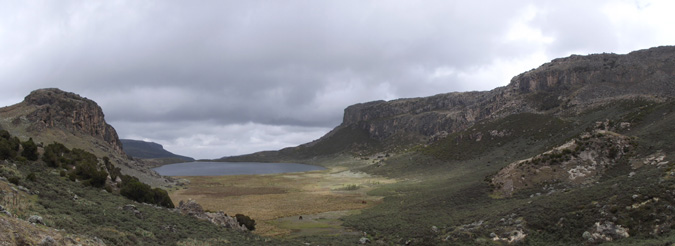
Only about 200 people a year trek in the Bale Mountains, and given the recent unrest in Ethiopia tourist numbers nationwide are drastically down; so we pretty much had the place to ourselves.
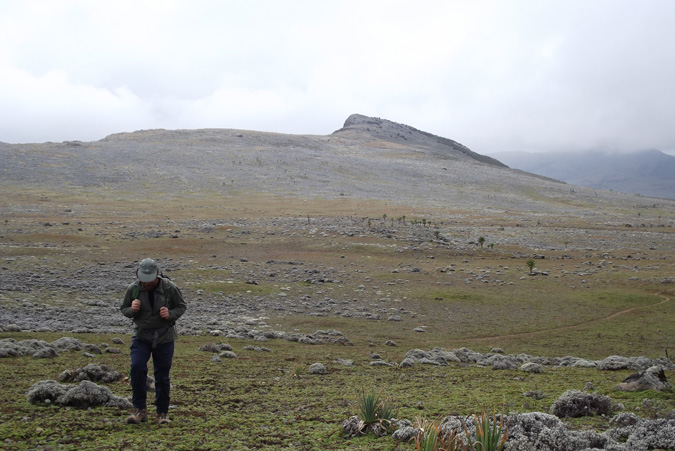
We didn’t see another trekker for the week we spent in the park, and if it hadn’t been quite so cloudy when we climbed to the top of Tullu Demtu (Ethiopia’s second-highest mountain at 4,377m) I know there wouldn’t have been another person below us in this spectacular, ethereal landscape for as far as the eye could see.

Averaging 4,000m above sea level there is nowhere else like it on the African continent, a place where natural selection has been hard at work; plants, animals and birds have all been fine-tuned to withstand the extremes of temperature, oxygen depletion, fierce winds and extreme ultraviolet radiation.

The result has been the creation of an ecosystem that is one of those rare and rarefied places, where many of the things that live here are found nowhere else. There are more animals unique to these mountains than just about anywhere else on the planet!

The Bale Highlands are home to 20 endemic Ethiopian mammals (five of which, including the magnificent and endangered mountain nyala, are found only here), 12 endemic amphibians, 12 reptiles, 16 endemic birds and all the Bale monkeys and big-headed mole-rats in the world.
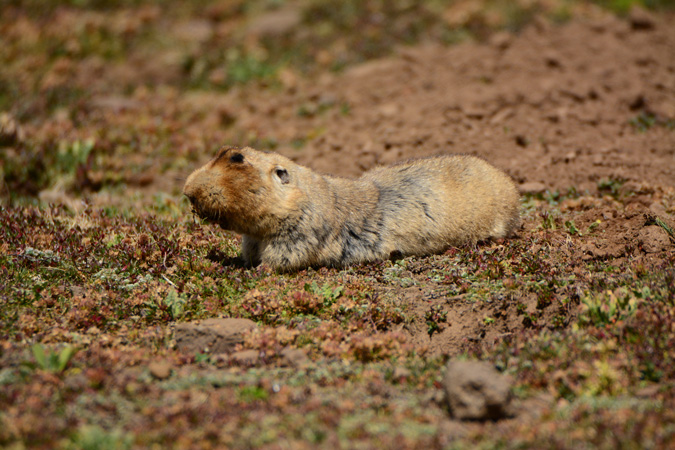
The Bale Mountains are rated one of the four top birding spots in Africa and it is easy to see why, with such rare birds as the blue-winged goose, Abyssinian catbird, spot-breasted plover and Abyssinian ground-hornbill to be seen.
Ethiopia has more than 860 species of bird, 283 of which are found in the Bale Mountains and 16 of which are endemic to these highlands.
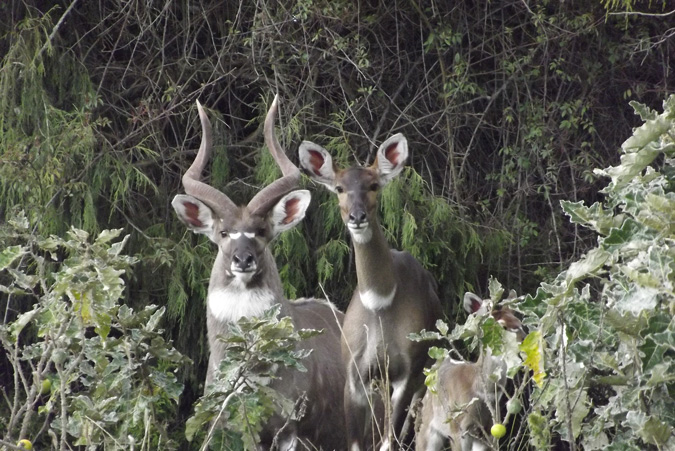
In 1969, 215,000 hectares of the Bale Mountains were declared a National Park and in 2009 nominated as a World Heritage site. But Bale is not a national park in the normal western understanding of the concept.
Somewhere between 20,000 and 40,000 people live within the park’s boundaries, divided between local villagers in the Harrena forest and pastoralists tending cattle, sheep and horses on the Senetti Plateau. Stock numbers now exceed the sustainable utilisation of the fragile moorlands, threatening the food source of the rodents, who are in turn the principal food source of all the carnivores, including the Ethiopian wolf.
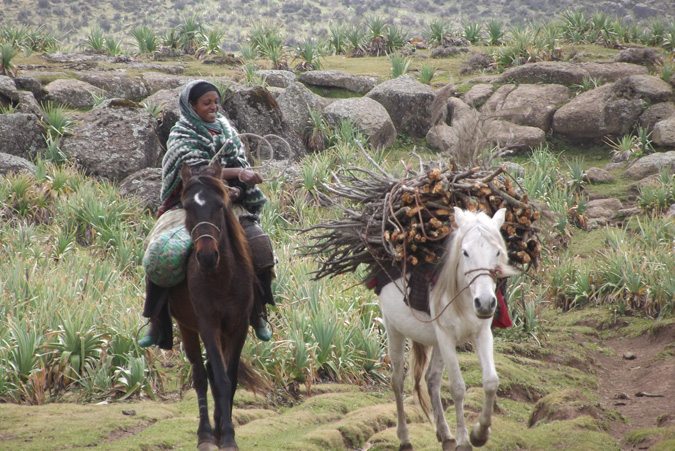
The star of the Bale show is undoubtedly the Ethiopian wolf (Canis simensis). With its thick, brick red coat on top and white belly below, its narrow snout and lithe body, it looks more like a large fox or a jackal than a wolf. The afro-alpine zone of the park is home to about half of the world’s total population of between 400 and 450 Ethiopian wolves – this is the rarest canid on the planet and Africa’s most endangered carnivore.

An even bigger threat to the wolves than the shortage of rodents to eat is the presence of several thousand domestic dogs in the park. These dogs are carriers of rabies and interact openly with the wolves. In 2010 rabies and distemper killed 106 of the wolves (about 40% of the Bale population at the time) and again in 2014 between 30 and 50% of the parks wolves were killed by rabies.
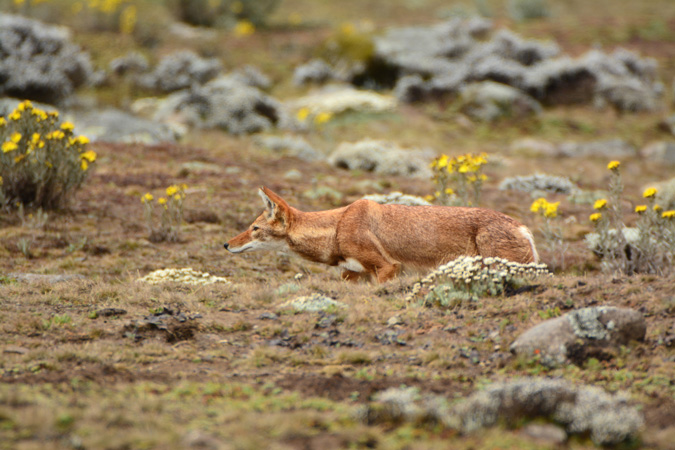
The numbers have recovered slightly now, due to a rabies vaccination project and the Ethiopian Wolf Conservation Project, which attempts to vaccinate 4000 domestic dogs, and all of the wolves in the park annually. We were lucky to see twelve wolves during our time in the park and also met some of the researchers working with the conservation project as they walked the plateau making notes on the wolves they saw.
Conservationists worry that if a viable solution is not found and efforts to control the unsustainable exploitation of the park’s natural resources are not successful, that not only the Ethiopian wolf but a number of other rare and endangered animals in Bale will vanish.
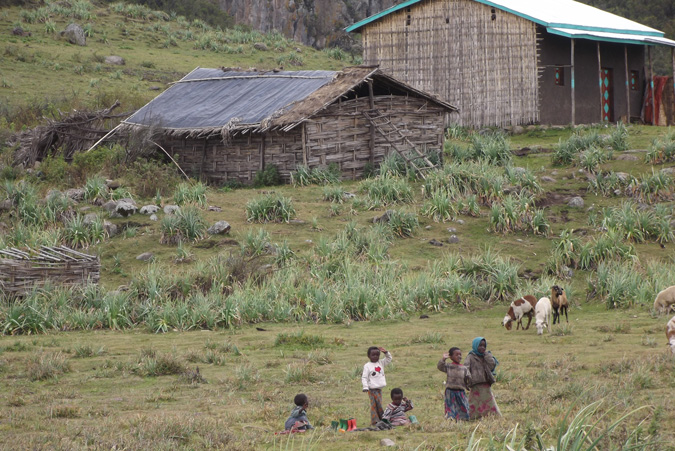
A week was barely long enough to do justice to this beautiful park. We trekked across approximately one-third of the park, starting in the tiny rural town of Dinsho, crossing the Senetti Plateau and finishing in the Harrena Forest. It was a ‘rustic’ style trip, food was basic, to say the least, our cook had a repertoire that consisted solely of rice with cabbage or pasta with tomato sauce, and we ate these dishes with regular monotony; always knowing that whichever we ate for lunch, the other would, without fail, appear at dinner!

The accommodation was tents, which were tiny but snug and warm and many mornings we awoke to find it covered with a layer of ice. This was an amazing opportunity to visit Ethiopia’s most important biodiversity hotspot and see some of the rarest creatures in the world.

Also read: Enchanting Ethiopia
To comment on this story: Login (or sign up) to our app here - it's a troll-free safe place 🙂.![]()






